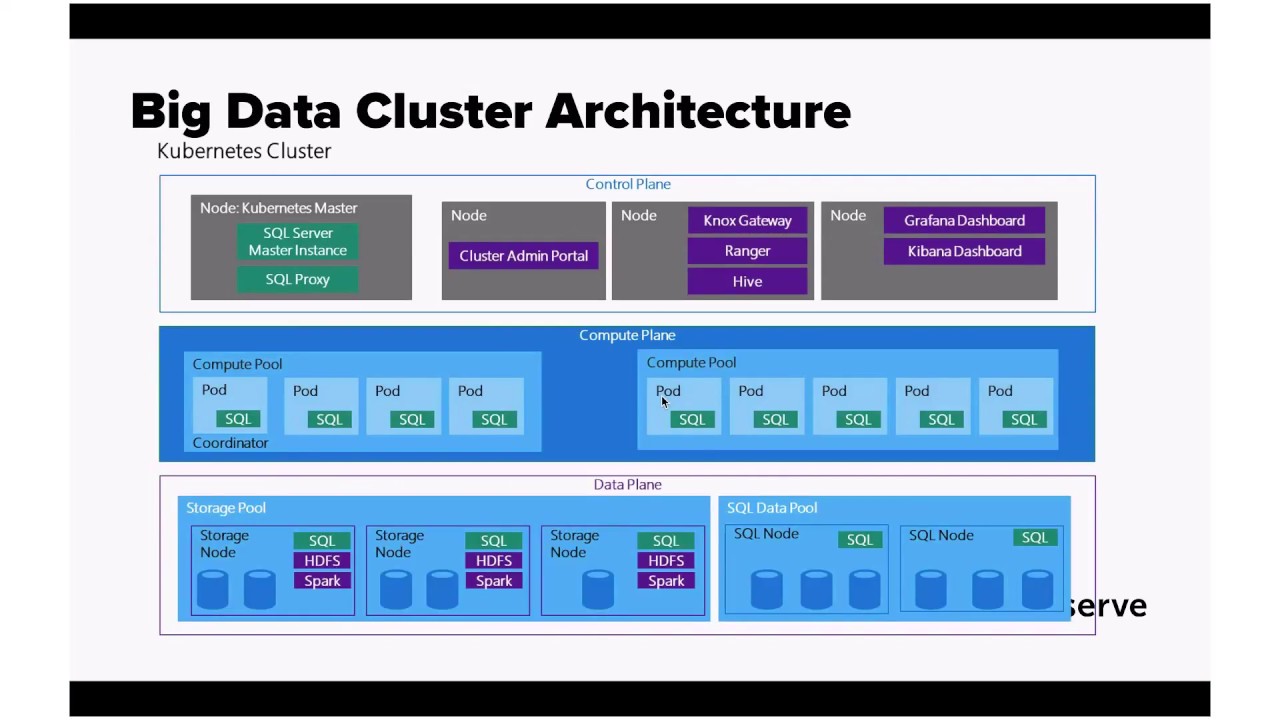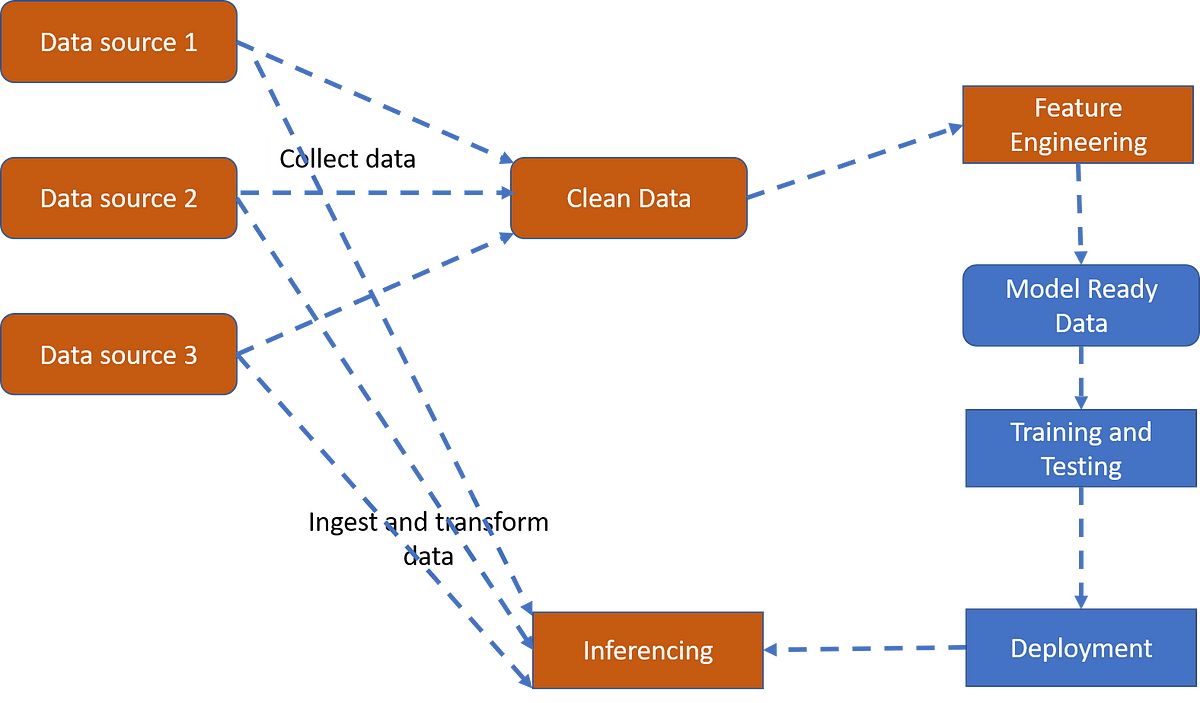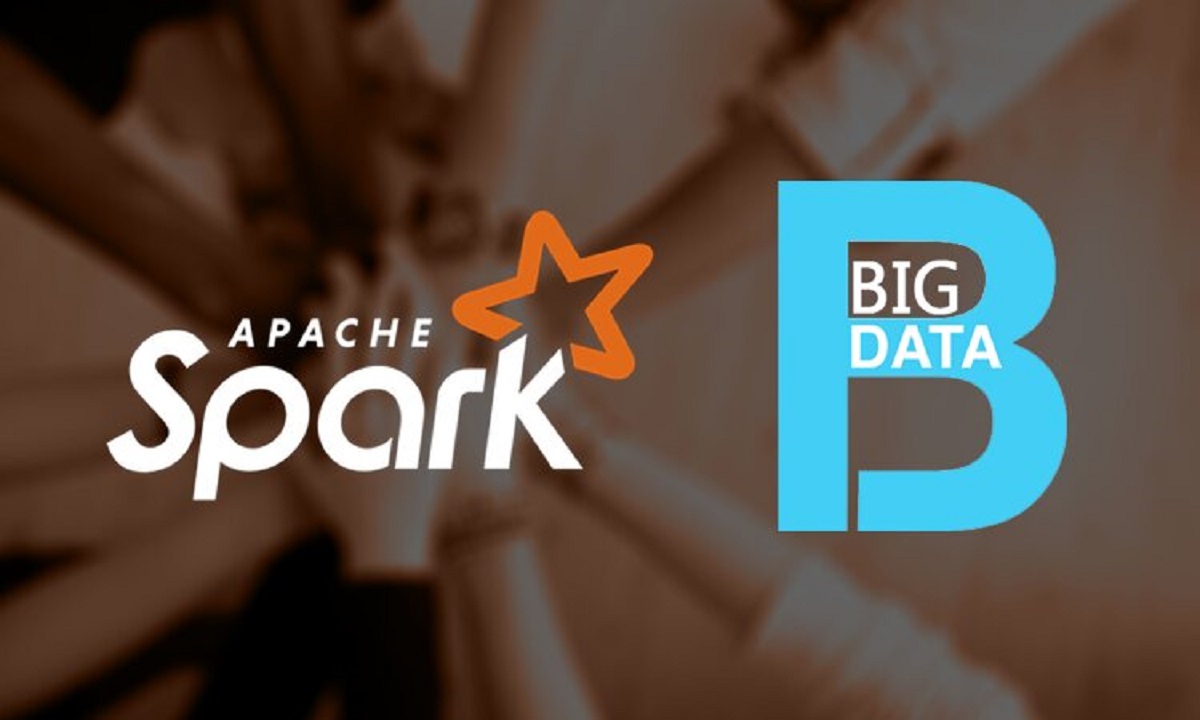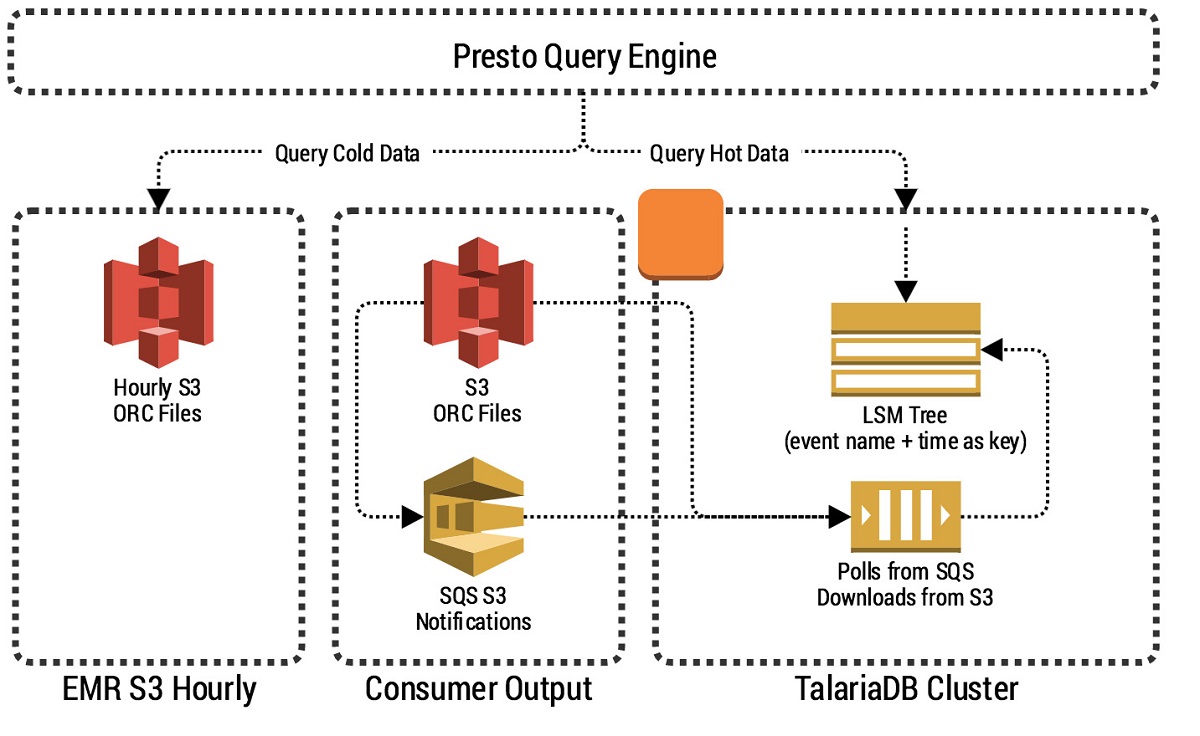Introduction
Big data has become an integral part of our daily lives, and with the constant influx of massive amounts of data from various sources, the need to analyze and make sense of this data has become imperative. One of the key techniques used in big data analysis is clustering, which plays a vital role in uncovering meaningful patterns and structures within the data.
Clustering, in relation to big data, refers to the process of grouping similar data points together based on their inherent characteristics or properties. It aims to discover hidden patterns, relationships, and insights within a dataset by organizing the data into clusters or clusters of similar observations.
The main goal of clustering in big data is to identify and extract valuable information from the data, enabling businesses and organizations to make data-driven decisions, gain competitive advantages, and gain deeper insights into customer behavior.
Cluster analysis, as it is also known, has gained immense popularity and has been widely adopted in various industries such as marketing, finance, healthcare, and e-commerce. By employing clustering techniques, businesses can better understand customer segments, detect anomalies or outliers, improve recommendation systems, and optimize marketing campaigns.
With the rise of big data, the importance of clustering algorithms has grown significantly. These algorithms provide efficient and scalable solutions to handle large volumes of data, enabling the identification of clusters and the exploration of complex relationships within the data.
In this article, we will explore the concept of clustering in big data, discuss the importance and applications of clusters, delve into different clustering algorithms, and highlight the challenges that arise in cluster analysis for big data. Furthermore, we will discuss the considerations and techniques involved in choosing the appropriate clustering algorithm for specific big data scenarios.
Definition of Cluster in Big Data
In the context of big data analysis, a cluster refers to a group or collection of data points that share similar characteristics or properties. These data points within a cluster are more alike to each other compared to those in other clusters. Clustering algorithms aim to identify these groups or clusters within a dataset based on various factors such as proximity, similarity, or density.
Clusters can be seen as subsets of data points that exhibit patterns or structures distinct from the rest of the data. They are formed based on the similarity of attributes or features in the dataset, and the goal of clustering is to group together data points that are more related to each other than to those in other clusters.
When it comes to big data, the notion of clusters becomes even more important. As the volume, velocity, and variety of data increase, the ability to organize and make sense of the data becomes increasingly challenging. Clustering algorithms provide a way to explore and understand the patterns and relationships present in large and complex datasets.
There are different types of clusters that can be identified in big data. Density-based clusters are formed based on the density of data points in a specific region, while centroid-based clusters are determined by the proximity to a central point or centroid. Hierarchical clustering techniques group data points in a hierarchical manner, creating nested clusters. These are just a few examples of the diverse cluster types that can be discovered in big data analysis.
By identifying clusters within a dataset, analysts and data scientists can gain valuable insights and make informed decisions. Clusters can help in segmenting customers based on their preferences, identifying patterns of fraud or anomalies, optimizing supply chain management, and enhancing recommendations or personalization in e-commerce settings.
In summary, clusters in big data analysis are groups of data points that exhibit similar characteristics or properties. They enable the identification of patterns, relationships, and structures within a dataset, providing valuable insights for decision-making and problem-solving in various industries. Clustering algorithms play a crucial role in uncovering these clusters and unlocking the hidden potential of big data.
Importance of Clusters in Big Data
Clusters play a significant role in big data analysis by providing a means to organize and uncover patterns within vast amounts of data. Understanding the importance of clusters in big data is crucial for businesses and organizations seeking to extract insights and make data-driven decisions. Let’s explore the key reasons why clusters are essential in the realm of big data:
1. Identifying Patterns and Relationships: Clusters allow analysts to identify patterns and relationships within the data that might not be apparent at first glance. By grouping similar data points together, clusters reveal hidden structures and provide a deeper understanding of the underlying trends and associations present in the dataset.
2. Customer Segmentation: Clusters enable businesses to segment their customer base effectively. Through clustering algorithms, customers with similar preferences, behaviors, or demographics can be grouped together. This segmentation allows organizations to tailor their marketing strategies, personalize customer experiences, and improve customer satisfaction. By understanding different customer segments, businesses can target their offerings more effectively and maximize their marketing efforts.
3. Anomaly Detection: Clusters help identify anomalies or outliers within the data. Anomalies can be indicative of fraudulent activities, technical glitches, or exceptional events. By isolating these anomalies through clustering techniques, businesses can take immediate action to investigate and address potential issues, enhancing security and operational efficiency.
4. Decision-making and Strategy Development: Clusters provide insights that aid in decision-making and strategy development. By analyzing patterns and trends within clusters, organizations can identify emerging market trends, predict customer preferences, and align their business strategies accordingly. The knowledge derived from clustering analysis empowers businesses to make data-driven decisions, leading to improved operational efficiency and a competitive advantage.
5. Resource Optimization: Cluster analysis helps optimize resource allocation and utilization. By understanding the distribution of data points within clusters, organizations can allocate resources strategically, allocate budgets efficiently, and optimize their supply chain management. This allows for better resource planning, improved cost-saving strategies, and increased operational effectiveness.
6. Enhanced Recommendation Systems: Clusters contribute to the development of accurate recommendation systems. By identifying similar patterns and preferences within clusters, organizations can provide personalized recommendations to their customers. This leads to higher customer satisfaction, increased sales, and improved customer loyalty.
In summary, clusters are of paramount importance in big data analysis. They allow organizations to uncover hidden patterns and relationships within the data, segment customers effectively, detect anomalies, make data-driven decisions, optimize resource allocation, and enhance recommendation systems. By harnessing the power of clusters, businesses can leverage big data to gain valuable insights and drive success in their operations.
Types of Clustering Algorithms
There are several types of clustering algorithms that serve different purposes and cater to various data analysis needs. These algorithms provide distinct approaches to grouping similar data points into clusters. Let’s explore some common types of clustering algorithms:
1. K-means: K-means is one of the most widely used clustering algorithms. It aims to partition data points into K clusters based on the similarity of their attributes. The number of clusters, K, needs to be specified before running the algorithm. K-means iteratively updates the cluster centroids until convergence, minimizing the sum of squared distances between data points and their assigned cluster centroids.
2. Hierarchical Clustering: Hierarchical clustering algorithms create a hierarchical structure of clusters by iteratively merging or splitting clusters. These algorithms can be agglomerative (bottom-up) or divisive (top-down). Agglomerative algorithms start with each data point as a separate cluster and iteratively merge clusters based on the similarity between them. Divisive algorithms begin with a single cluster containing all data points and recursively split it into smaller clusters until predefined stopping criteria are met.
3. Density-based Clustering: Density-based clustering algorithms, such as DBSCAN (Density-Based Spatial Clustering of Applications with Noise), group data points based on the density of their distribution. The algorithms define clusters as regions with high-density data points separated by regions of lower density. They are effective in identifying clusters with irregular shapes and can handle noise and outliers in the data.
4. Mean Shift: Mean Shift clustering algorithm is a density-based algorithm that iteratively moves data points towards the mode of their local feature distribution. It aims to find the densest regions or modes of the data distribution, which correspond to the centroids of clusters. Mean Shift can identify clusters with arbitrary shapes and does not require the number of clusters to be predefined.
5. DBSCAN: DBSCAN is a popular density-based clustering algorithm that groups together data points that are close to each other and have a sufficient number of neighboring points. It does not require the number of clusters to be specified in advance and can discover clusters of arbitrary shapes. DBSCAN is also robust to noise and capable of detecting outliers.
6. Spectral Clustering: Spectral clustering algorithms use the spectrum of the similarity matrix between data points to perform clustering. They transform the data into a lower-dimensional space using eigenvectors and then apply traditional clustering algorithms. Spectral clustering is particularly useful for datasets with complex structures and non-linear relationships between data points.
Each clustering algorithm has its advantages and is suitable for specific data characteristics and analysis objectives. It is important to consider the nature of the data, the desired number of clusters, and the shape of the clusters when selecting and implementing a clustering algorithm.
In summary, clustering algorithms, such as K-means, hierarchical clustering, density-based clustering, mean shift, DBSCAN, and spectral clustering, offer different approaches to grouping similar data points into clusters. By understanding the characteristics and capabilities of these algorithms, analysts can choose the most appropriate algorithm for their specific data analysis needs.
Techniques for Cluster Analysis in Big Data
Cluster analysis in big data involves applying various techniques to analyze and interpret the clusters identified within a dataset. These techniques help extract meaningful insights from the clusters and facilitate decision-making. Let’s explore some common techniques used for cluster analysis in big data:
1. Visualization: Visualization plays a vital role in cluster analysis as it provides a visual representation of the clusters and their relationships. Techniques such as scatter plots, heatmaps, dendrograms, and parallel coordinates can be used to visualize cluster assignments, similarities, and differences. Visualizations help analysts gain a better understanding of the data patterns and assist in identifying any outliers or anomalies that might exist within the clusters.
2. Feature Selection and Dimensionality Reduction: Big data often contains a large number of features, which can make cluster analysis complex and computationally expensive. To address this challenge, techniques such as feature selection and dimensionality reduction are employed. Feature selection aims to identify the most relevant features that contribute to the clustering result, while dimensionality reduction techniques such as Principal Component Analysis (PCA) or t-SNE (t-Distributed Stochastic Neighbor Embedding) can reduce the dimensionality of the data while preserving important patterns and relationships.
3. Cluster Validation: Cluster validation techniques evaluate the quality and reliability of the clusters identified by the clustering algorithms. These techniques measure the compactness, separation, and stability of the clusters. Popular cluster validation metrics include the Silhouette coefficient, Calinski-Harabasz index, and Davies-Bouldin index. Cluster validation helps assess the effectiveness of the clustering algorithm and ensures that the obtained clusters are meaningful and interpretable.
4. Ensemble Techniques: Ensemble techniques combine the results of multiple clustering algorithms to improve the accuracy and robustness of the cluster analysis. Ensemble clustering methods, such as consensus clustering and cluster ensemble, integrate the outputs of individual clustering algorithms to create a consensus clustering solution. These techniques reduce the bias and variance of the clustering results and enhance the overall performance of cluster analysis in big data.
5. Scalable Algorithms: Big data requires clustering algorithms that can handle the massive volume and velocity of the data. Scalable clustering algorithms, such as parallel and distributed clustering algorithms, are designed to process large-scale datasets efficiently. These algorithms leverage parallel computing and distributed systems to accelerate the clustering process and handle the computational challenges posed by big data.
6. Mining Cluster Rules: Mining cluster rules involves identifying association rules or patterns within the clusters. These rules provide insights into the relationships between different features or attributes within cluster groups. By analyzing the rules, analysts can gain a deeper understanding of the characteristics and behaviors represented by each cluster.
These techniques collectively contribute to the effective analysis of clusters in big data, enabling analysts to extract valuable insights, make informed decisions, and uncover hidden patterns and relationships within the data.
Considerations for Choosing a Clustering Algorithm in Big Data
Choosing the right clustering algorithm for big data analysis is crucial to ensure accurate and meaningful results. There are several key considerations to keep in mind when selecting a clustering algorithm for big data. Let’s explore these considerations:
1. Scalability: The scalability of the clustering algorithm is of utmost importance when dealing with big data. As the volume and velocity of the data increase, the algorithm should be able to handle the computational demands efficiently. Scalable algorithms, such as parallel or distributed clustering algorithms, are designed to process large-scale datasets by leveraging parallel processing or distributed computing frameworks.
2. Data Characteristics: It is essential to consider the characteristics of the data before selecting a clustering algorithm. Factors such as data dimensionality, data sparsity, data distribution, and presence of noise or outliers can significantly impact the performance and suitability of the algorithm. Some algorithms, like density-based clustering algorithms, are better suited for datasets with irregular shapes and varying densities, while others, like centroid-based algorithms, are more appropriate for datasets with well-defined clusters.
3. Number of Clusters: The desired number of clusters is an important consideration in selecting a clustering algorithm. Some algorithms, such as K-means, require the number of clusters to be specified in advance, while others, like density-based algorithms, can automatically determine the number of clusters. It is crucial to have an understanding of the expected number of clusters or have domain knowledge to choose an algorithm that can handle the desired number of clusters effectively.
4. Interpretability: The interpretability of the clustering results should be considered, especially when the analysis aims to provide actionable insights or communicate the findings to stakeholders. Some algorithms provide easily interpretable results, such as hierarchical clustering, where the dendrogram shows the relationship between clusters. On the other hand, some algorithms may produce less interpretable results, especially those with complex mathematical calculations or high-dimensional space transformations.
5. Robustness to Noise and Outliers: The presence of noise and outliers is common in big data. It is important to select an algorithm that is robust to noise and capable of handling outliers effectively. Density-based algorithms like DBSCAN are often robust to noise and can identify outliers as separate clusters. Robustness to noise and outliers ensures that the clustering results are not skewed or distorted by these data anomalies.
6. Computational Resources: The availability of computational resources, such as processing power, memory, and storage, should be considered when selecting a clustering algorithm for big data. Some algorithms may require substantial computational resources and may not be suitable for environments with limited resources. It is important to choose an algorithm that can efficiently utilize the available resources, considering the scalability and computational requirements.
By considering these factors, analysts can make informed decisions and choose the most appropriate clustering algorithm for their big data analysis, ensuring accurate and meaningful results that align with the specific characteristics and objectives of their dataset.
Challenges in Cluster Analysis for Big Data
Cluster analysis for big data comes with its own set of challenges due to the sheer volume, velocity, and variety of data involved. These challenges can impact the accuracy, efficiency, and scalability of the cluster analysis process. Let’s explore some common challenges faced when performing cluster analysis on big data:
1. Scalability: The scalability of clustering algorithms is a major challenge when dealing with big data. Traditional clustering algorithms may struggle to handle the computational requirements of large-scale datasets. The increase in data volume necessitates the use of scalable algorithms that can process and analyze big data efficiently. Parallel and distributed clustering algorithms, which leverage distributed computing frameworks like Hadoop and Spark, are often employed to address scalability challenges.
2. High-Dimensional Data: Big data often exhibits high dimensionality, with a large number of features or variables. High-dimensional data poses challenges for many clustering algorithms, as the curse of dimensionality can lead to increased computational complexity and a degradation of clustering performance. Feature selection and dimensionality reduction techniques can be applied to mitigate these challenges and improve the efficiency and accuracy of clustering algorithms.
3. Data Sparsity: Big data can be sparsely populated, meaning that many data points have missing or incomplete attribute values. Data sparsity poses challenges for traditional clustering algorithms since the missing values can affect the clustering results and increase the uncertainty in the analysis. Techniques such as imputation or probabilistic models can be used to address data sparsity and improve the reliability of the clustering analysis.
4. Noise and Outliers: Big data often contains noisy or erroneous data points that can negatively impact the clustering results. Outliers, in particular, can distort the clustering structure and lead to inaccurate or misleading clusters. It is important to employ robust clustering algorithms that can handle noise and outliers effectively. Density-based clustering algorithms, for example, are robust to noise and can identify outliers as separate clusters.
5. Computational Resources: Performing cluster analysis on big data requires significant computational resources in terms of processing power, memory, and storage. It can be a challenge to efficiently allocate and manage these resources, especially when dealing with massive datasets. Efficient utilization of computational resources, parallel processing, and distributed computing frameworks are essential to tackle these challenges in order to achieve scalable and high-performance cluster analysis.
6. Interpreting and Validating Results: Big data clustering analysis may produce complex and high-dimensional results that are challenging to interpret and validate. Interpreting and extracting meaningful insights from the clustering results can be a daunting task, especially for high-dimensional datasets. Additionally, validating the quality and reliability of the clustering results becomes more difficult due to the lack of ground truth labels and the scale of the data. Developing appropriate visualization techniques and utilizing cluster validation measures are essential to tackle these challenges effectively.
In summary, cluster analysis for big data comes with challenges related to scalability, high-dimensional data, data sparsity, noise and outliers, computational resources, and interpreting and validating results. Addressing these challenges through the use of scalable algorithms, dimensionality reduction techniques, robust clustering algorithms, efficient resource management, and appropriate validation and interpretation techniques is crucial in obtaining accurate and meaningful insights from big data clustering analysis.
Applications of Cluster Analysis in Big Data
Cluster analysis plays a vital role in extracting valuable insights and driving decision-making in various industries. With the advent of big data, the applications of cluster analysis have expanded significantly. Let’s explore some common applications of cluster analysis in big data:
1. Customer Segmentation: One of the primary applications of cluster analysis in big data is customer segmentation. By clustering customers based on their preferences, behaviors, or demographic attributes, businesses can gain a deeper understanding of their customer base. This information allows them to tailor marketing strategies, personalize product recommendations, and improve customer satisfaction and retention rates.
2. Fraud Detection: Cluster analysis is widely used for fraud detection in big data environments. By analyzing patterns and anomalous behaviors within clusters of transactions or activities, organizations can identify potential fraud incidents. Unusual or unexpected patterns within a cluster can indicate fraudulent activities, helping businesses to take timely action and prevent financial losses.
3. Image and Text Clustering: Cluster analysis is used extensively in image and text analysis to group similar images or documents together. In image clustering, algorithms analyze visual features and attributes to cluster images into categories or themes. In text clustering, algorithms analyze textual content and extract meaningful themes or topics present in a collection of documents. Image and text clustering enable efficient organization, retrieval, and recommendation of related media.
4. Market Analysis: Cluster analysis helps analyze market data in big data environments. By grouping products, customers, or transactions into clusters, businesses can identify market segments, understand consumer preferences, and develop targeted marketing strategies. It allows organizations to identify specific market niches, refine product offerings, and optimize marketing campaigns for maximum impact and customer engagement.
5. Anomaly Detection: Cluster analysis is an effective technique for anomaly detection in big data. By clustering normal data points and detecting outliers or anomalies, organizations can identify unusual or suspicious events, activities, or behaviors. This has applications in areas such as cybersecurity, fraud detection, network monitoring, and predictive maintenance.
6. Healthcare Analytics: In healthcare, cluster analysis is used for patient segmentation, disease profiling, and treatment optimization. By clustering patients based on medical records, genetic information, or clinical outcomes, healthcare providers can tailor treatment plans, identify high-risk patient groups, and optimize resource allocation. Cluster analysis helps improve patient care and contributes to personalized medicine.
7. Supply Chain Optimization: Cluster analysis is employed to optimize supply chain operations in big data environments. By clustering products, customers, or suppliers based on attributes such as demand patterns, geographic locations, or shipping routes, businesses can improve inventory management, enhance demand forecasting, optimize logistics, and streamline supply chain processes.
These are just a few examples of the wide-ranging applications of cluster analysis in big data. As organizations continue to generate and analyze massive amounts of data, cluster analysis will play an increasingly significant role in deriving meaningful insights and driving decision-making across diverse industries.
Conclusion
Cluster analysis is a crucial technique in the world of big data, enabling organizations to uncover meaningful patterns, relationships, and insights within vast datasets. Through the use of various clustering algorithms and techniques, businesses can optimize decision-making, enhance customer segmentation, identify fraud, discover anomalies, and streamline operations in numerous industries.
In this article, we explored the importance of clusters in big data analysis and their role in uncovering hidden structures and patterns. We discussed different types of clustering algorithms, including K-means, hierarchical clustering, density-based clustering, mean shift, DBSCAN, and spectral clustering, each offering unique approaches to grouping similar data points into clusters.
We also delved into techniques for cluster analysis in big data, such as visualization, feature selection and dimensionality reduction, cluster validation, ensemble techniques, scalable algorithms, and rule mining. These techniques contribute to the effective analysis of clusters and the extraction of valuable insights from big data.
However, conducting cluster analysis in big data also presents its own challenges. These challenges include scalability, handling high-dimensional data, addressing data sparsity, dealing with noise and outliers, managing computational resources, and interpreting and validating the clustering results.
Despite these challenges, the applications of cluster analysis in big data are vast. From customer segmentation and fraud detection to market analysis, anomaly detection, healthcare analytics, and supply chain optimization, cluster analysis enables organizations to uncover valuable insights, make data-driven decisions, and drive success in their operations.
In conclusion, cluster analysis in big data is a powerful tool that provides businesses with deeper insights into their data, leading to improved decision-making and competitive advantages. By understanding the concepts, algorithms, techniques, and challenges associated with cluster analysis, organizations can leverage the full potential of their big data and unlock valuable insights that drive innovation, growth, and success.

























